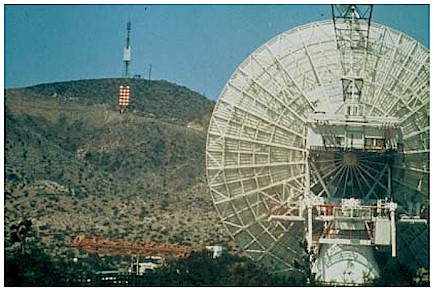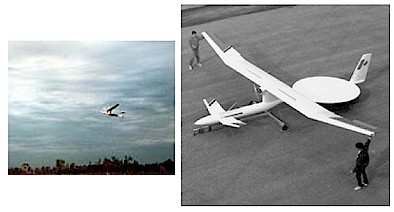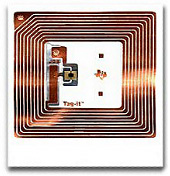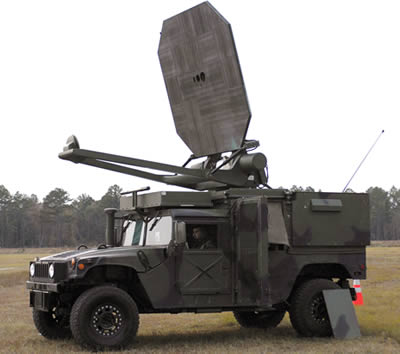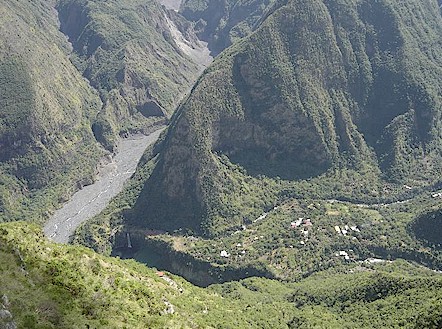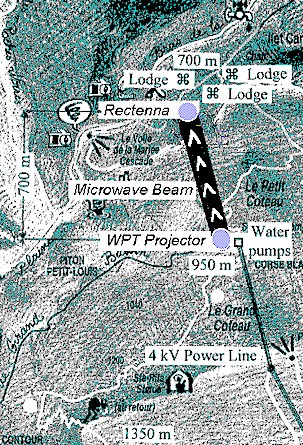|
Mainland High School
Cutting the Cord: ISTF 07-1726 |
||
|
Home
Introduction Components One Two  Product Product
Three Microwave Research W. C. Brown Generators History Phased Arrays Properties Rectennas Semiconductors Solar Satellites Superconductors Moon Research Colonization Helium-3 Fusion Geography Mining Resources Project Assessment Bibliography Glossary Team |
Component One
Prepare a 200- to 300-word history about the National Critical Technology (NCT) technical application your team has selected to solve a local or national problem.
Research affecting the study of microwaves began almost 350 years ago and continues to advance to this day. Instrumental to developing this research, numerous scientists and engineers are immortalized in the history of electromagnetism, radar and radio, as well as semiconductors and superconductors. In the early 1900's, spark-gap radio transmitters, such as Morse Code, telegraphs, continuous waves, and radio broadcasting became an accepted everyday occurrence. Microwaves were extensively researched in WWII for the British fine-tuned radar for the use of "night vision" used during the Bombing of Britain. Multiple militaries used radar on cargo ships to detect submarines and determine their location. Microwave communications entered our daily, middle-class lives in the 1950’s as television signals. Long distance telephone signals were transferred using repeater towers. Communication satellites were introduced with the advent of Echo I and quickly upgraded to geosynchronous satellites that both received and transmitted microwave signals. And, of course, cordless phones and cell phones which most of us cannot live without. Microwave Power Transmission (MPT) has become a special area of research as fossil fuel sources deplete, and once underdeveloped countries enter the ranks of technologically developing nations. The possibility of using microwaves to deliver power to remote areas of the earth from solar satellites or other space alternatives has become a primary research topic. From Tesla’s coil in Colorado Springs, to Brown’s remotely powered helicopter, to JPL’s demonstration at the Venus Site at Goldstone, and to the Solar Powered Satellite Project sponsored by the Department of Energy and NASA, we can see the foundation for more power opportunities.
Cite three detailed examples of research done in the past 3 to 5 years which focused on the NCT technical application your team selected. Include:
 the funding agency, the funding agency,
 the principal investigator's name, and the principal investigator's name, and
 the institution where the research is or was being conducted. the institution where the research is or was being conducted.
Prior to citing our related grants, we would like to present three patents granted by the US Patent Office that directly support our project's goal.
Based on the research your team has done, explain how the NCT application chosen has advanced scientific knowledge.
In 1975 the Jet Propulsion Laboratory (JPL) Goldstone Facility successfully performed an experiment on microwave power transmission located in Goldstone, California. The Goldstone team accomplished this task at the 2.5 GHz band over a 1.6 km distance from an antenna dish to a rectenna. The team was able to produce an 84% efficiency with a 30 kW DC output. Small dipole antennas, in the heart of the rectenna, are connected to the Schottky-barrier diode. The Schottky-barrier diodes collectively act as the converter by transforming the microwaves into DC power. Stationary High Altitude Relay Platform (SHARP) is a one-eighth scale remote control plane meant to fly in circles to provide surveillance, monitoring services, and way to relay communications. The plane will fly for months at an operating altitude of twenty-one kilometers. It would maintain flight while powered by microwaves sent to it from a large antenna array on the ground. The plane was redesigned with slender wings and a large area on the body for the rectennas to pick up the microwaves. Dating back to WWII, aircrafts were identified by using Radio Frequency Identification (RFID) to tell if the aircraft was a friend or foe. Today, the use of RFID technology has sky rocketed and is used to identify the most basic items that you can purchase at you local superstore. Basically, "passive" RFID systems are devices that transfer information from a memory source without using a connected energy source. The information transfer happens when the RFID comes into the path of directed electromagnetic waves that produce enough energy to allow the RFID to send it data within a frequency between 860 MHz and 960 MHz. Then the RFID will reflect the information in a way that can be read by the reader. Developed by Raytheon in 2005, the Active Denial System uses high powered microwaves to cause pain for the person it is pointed at. It uses microwaves at a frequency of 95 GHz, which penetrate the skin and cause the water in the skin to be excited. This causes an intense pain sensation which is not permanently damaging. At the depth of half (0.5) of a millimeter instantly produces a heating sensation, which causes the victim to attempt to run away. The effects of the beam end as soon as the subject is not in a place it's pointing, or when the beam is turned off. The sensation is that of having a hot frying pan pressed against the skin. It is said to have a range of 700 yards. In 1994, a group of scientists from l'Université de la Réunion began the design of a wireless power transmission case study on the French island of La Réunion, near Madagascar. The team was lead by Dr. Jean-Daniel Lan-Sun-Luk, and presented its preliminary design at the WPT(wireless power transmission) Conference in 1995. From there, they began working on the case study. The model would be capable of transmitting wireless power to a small, isolated village on La Réunion known as Grand-Bassin. This tiny village has a population under 200, is surrounded by high canyon walls on all sides, and has no road access. Its natural isolation made it a perfect candidate for a wireless power transmission study as it did not receive any electricity at the time, and other proposals of power transportation were either too expensive or less efficient. In the study, 10 kW of power would be transmitted over a distance of 700 m. As this was not a purely vertical transmission, as SHARP was, human safety would be a concern, which lead the team to choose such a low power. The system would have 17.5 kW of power, thus giving it an overall efficiency of 57%. The transmitter unit would use a conventional magnetron and a projecting antenna array, which focused the power using a MultiFoci Parabolic Reflector antenna (MPR) developed specifically for this product. The power would then received with a rectenna array near the village. This benefited the team, as recent calculations show that any system which operates at efficiencies greater than 20% will be advantageous over photovoltaic cells. The team published their results in 1997. They then built a prototype, and finished this in 2001. The project was presented at the Wireless Power Transmission conference in 2001, which was held on the island. In correspondence with M. Lan-Sun-Luk, he stated that the team has been able to increase the overall efficiency of the system to 70%.1 He also stated that while "no concrete installation is considered for the moment" the cost of the project would be estimated to be "1 million dollars for 10 kW." Below is an image of the WPT 2001 conference, with the prototype rectenna behind them. This image was provided through email from M. Lan-Sun-Luk. ACTA Press - Effect of Antennas on Read Range in RFID Systems for Manufacturing and Logistics Control http://www.actapress.com/PaperInfo.aspx?PaperID=26390&reason=500 Defense Update - Active Denial System http://www.defense-update.com/products/a/ads.htm Emerson & Cuming Microwave Products - RFID http://www.eccosorb.com/asia/english/page/78/rfid Friends of CRC - SHARP http://www.friendsofcrc.ca/Projects/SHARP/sharp.html Georgia Tech - Wireless Power Transmission for Solar Power Satellite (SPS) http://www.sspi.gatech.edu/wptshinohara.pdf (pg 5,6) GlobalSecurity.org - Vehicle-Mounted Active Denial System http://www.globalsecurity.org/military/systems/ground/v-mads.htm Google Patent Search - United States Patent: 3989994 http://www.google.com/patents?id=kVswAAAAEBAJ&printsec=abstract&zoom=4&dq=3989994 Google Patent Search - United States Patent: 5321414 http://www.google.com/patents?id=AcUaAAAAEBAJ&printsec=abstract&zoom=4&dq=5321414 Ile de la Réunion - Grand Bassin http://ile-de-la-reunion.info/photos/grand-bassin.html International Symposium Nikola Tesla - Research Activities and Future Trends of Microwave Wireless Power Transmission http://www.tesla-symp06.org/papers/Tesla-Symp06_Budimir.pdf (pg 4) l'Université de La Réunion - The Grand-Bassin Case Study: Technical Aspects http://www2.univ-reunion.fr/~lcks/Old_Version/sps97.htm l'Université de La Réunion - Point-to-Point Wireless Power Transportation in Reunion Island http://www2.univ-reunion.fr/~lcks/Old_Version/PubIAF97.htm l'Université de La Réunion - Wireless Power Transportation: New Markets for Sustainable Development http://www2.univ-reunion.fr/~lcks/Old_Version/NMWPT.htm Microwave Journal - UHF RFID Industry Growth Powered by RF Technology http://www.mwjournal.com/Journal/article.asp?HH_ID=AR_563 NASA - CO-OPS http://ntrs.nasa.gov/archive/nasa/casi.ntrs.nasa.gov/19870009155_1987009155.pdf (pg 18) NASA - Goldstone Tour http://deepspace.jpl.nasa.gov/dsn/goldstone/index.html National Science Foundation - Microwave Research Instrumental Acquisition http://www.nsf.gov/awardsearch/showAward.do?AwardNumber=0319899 National Science Foundation - U.S.-Japan Joint Seminar: Space Solar Power Systems http://www.nsf.gov/awardsearch/showAward.do?AwardNumber=0315090 National Space Society - Colonies in Space http://www.nss.org/settlement/ColoniesInSpace/colonies_chap03.html Parise Research Technologies - Remote Charging System for a Vehicle http://www.parisetech.com/VRCPat1.pdf PR Newswire - Raytheon Delivers Breakthrough Non-Lethal Sheriff Active Denial System http://www.cyperus.com/cgi-bin/stories.pl?ACCT=104&STORY=/www/story/09-08-2005/0004103044&EDATE= Purdue University - Schottky Barrier Diodes http://www.ecn.purdue.edu/WBG/Device_Research/Schottky_Diodes/Index.html Sandia National Laboratories - Team Investigates Active Denial System for Security Applications http://www.sandia.gov/news-center/news-releases/2005/def-nonprolif-sec/active-denial.html Sunsat Energy Council - Newsletter http://www.sunsat.org/Ver.2/News1_2_2001.htm SystemID - RFID Tags and Labels http://www.systemid.com/rfid/labels.asp University of Wisconsin-Madison - Fusion experiment receives $2.7 million grant http://www.engr.wisc.edu/ep/newsletter/2002-03fallwinter/Article04_grant.html URSI - Microwave Power Transmissions in the World http://www.ursi.org/WP/Appendices1.pdf (pg 4, 6) WPT'01 - Programme Detaillé des Sessions (en anglais) http://www.science-sainte-rose.net/GrandBassin/wpt01/sessions.htm Dr. Jean-Daniel Lan-Sun-Luk 1email correspondences February 20-22, 2008 |
